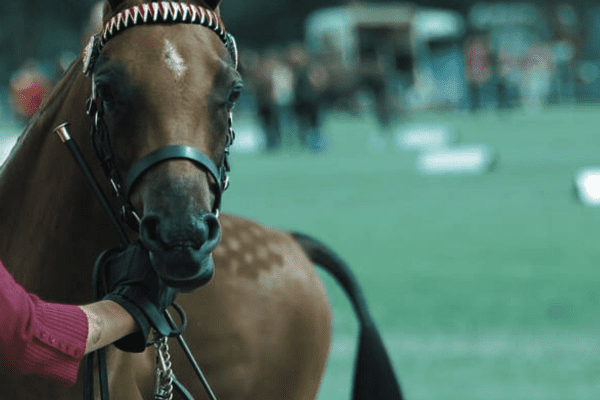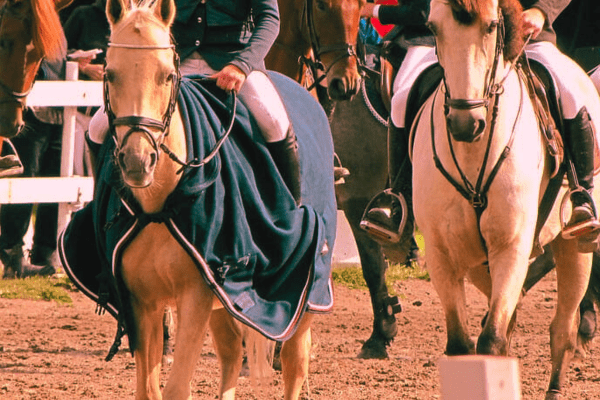In the realm of equestrian elegance, the British Riding Pony stands as a testament to refined breeding and enduring appeal. Originating in the United Kingdom, these diminutive equines have transcended borders to earn adoration as show ponies worldwide.
With their diverse classifications, encompassing the show pony, show hunter, and working hunter, British Riding Ponies offer a remarkable blend of versatility and charm. This exploration unveils the exceptional attributes and universal admiration that this breed commands, presenting a portrait of an equine treasure like no other.
History:
British Riding Ponies have a proud heritage dating back to generations of riding and hunting in Great Britain. Many beginners and younger riders entrust these exquisite ponies to care for them as their stories unfold like a tapestry over time.
Beginning in the early 1920s, visionary local breeders embarked upon their remarkable quest for equine perfection by drawing inspiration from native Dartmoor ponies and Welsh breeds such as Welsh Cobs. Through an innovative transformation experiment involving infusing Arabian and Thoroughbred bloodlines into these hardy ponies’ bloodlines.
Arabian blood, symbolized by influential stallions like Naseel, was instrumental in shaping an entirely unique breed of horses. These newly refined ponies stood out with compact frames, graceful elegance, and an excellent temperament ideal for show ring competitions.
In 1893, The Polo Pony Stud Book marked an important turning point in British polo and riding pony history with its establishment. Boasting over 600 mares and 100 stallions at its inception, its name changed to reflect its expanding scope; henceforth known as The “Polo Pony and Riding Pony Stud Book.”
In 1903, to recognize its growing influence it officially changed its name again becoming “Polo Pony and Riding Pony Stud Book”. This change signified a commitment to embrace riding ponies more broadly.
In 1913, yet another change took place when “The National Pony Society” (NPS) came into being. This venerable institution assumed the sacred task of upholding British Riding Ponies while serving as custodian of their esteemed breed registry.
Characteristics:
British Riding Ponies, widely recognized as the epitome of equine refinement, possess an exceptional set of traits that set them apart from conventional ponies.
Despite their smaller stature, British Riding Ponies share striking resemblances with miniature horses due to their delicate heads and petite ears; compact frames adorned with sloping shoulders give an air of graceful athleticism; they boast sturdy limbs for efficient gaits as well as resilient hooves for functional soundness – qualities which make them sought-after companions in equestrianism!
One can distinguish three distinct types of British Riding Ponies. Each type is distinguished by specific traits and purposes:
Show Ponies are the epitome of elegance. Their appearance resembles show hacks while still possessing distinctive pony characteristics that distinguish them.
Show Pony: Many show ponies boast Arabian or Thoroughbred bloodline, further elevating their refined qualities. Show ponies can be divided into three height categories to accommodate varying size requirements: up to 12.2 hands; 12.2- 13.2 hands and 13.2- 14.2 hands.
Show Hunters: Show hunters are similar to show ponies but are larger and can carry riders over more varied terrain and challenges. Additionally, show hunters are organized by height divisions similar to show ponies.
Working Hunter: Working hunters have stockier builds and more utilitarian demeanor. Their primary function involves maneuvering through natural fences with precision and poise; height class divisions are determined based on whether their height exceeds 13 hands; those under 13 hands may only encounter obstacles up to 2 feet 6 inches in height, while those exceeding 13 hands should face obstacles no higher than 3 feet.


Preserving a Treasured Breed:
Although the British Riding Pony has gained global attention, it’s important to acknowledge all those involved in preserving and promoting it.
Breed societies and breeding programs play an invaluable role in upholding standards and qualities that ensure future generations can appreciate its beauty and versatility.

